| First the neat stuff: | 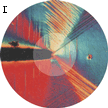 |
Click for a bigger animation. |
This work was done in collaboration with Wendy Crone, Walt Drugan, Adam Crueziger and Bryan Henneman and supported by the National Science Foundation. A paper on this work has been submitted to the Journal of the Mechanics and Physics of Solids.
| First the neat stuff: |  |
Click for a bigger animation. |
The images in the animation above are microscope images using a Nikon Microscope with Differential Interference Contrast (DIC). A DIC microscope makes surface tilt appear as false colors and it makes observing surface relief easier. The images are of single crystal copper with a notch. They have been loaded in tension perpendicular to the notch. Copper has an FCC crystal structure and when deformed plastically develops slip lines on the surface. These slip lines allow the plastic deformation near the notch to be observed and the active slip systems identified.
For the surface of the copper single crystals used for this paper, there are three possible slip lines as shown in the figure below. This figure also shows the orientations of the notches in the six specimens in this study.
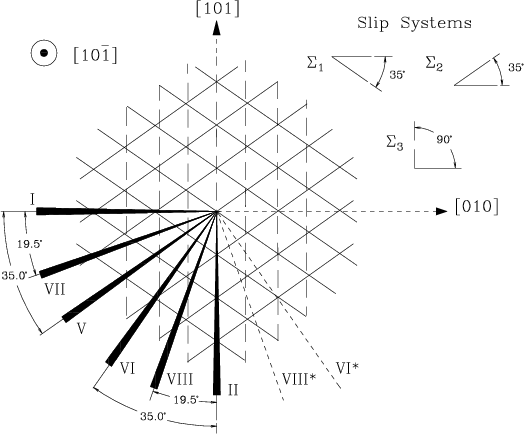
In the figures below:
Each slip line can be produced by a stress state along two of the lines in the figures below. The intersection of the yield surfaces and the Red or Blue curves gives a prediction for where the first slip lines will be observed on the specimen surface. This is called initial yield.
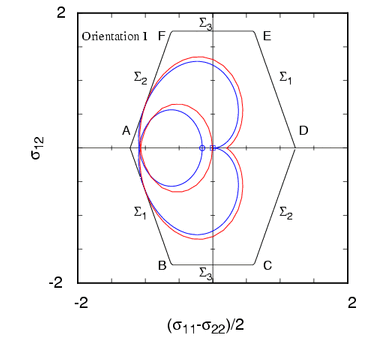 |
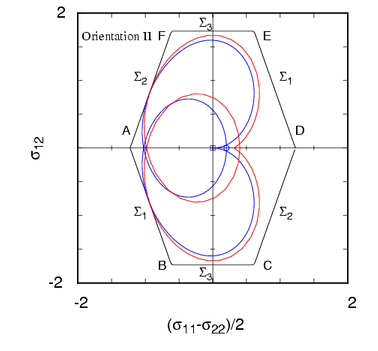 |
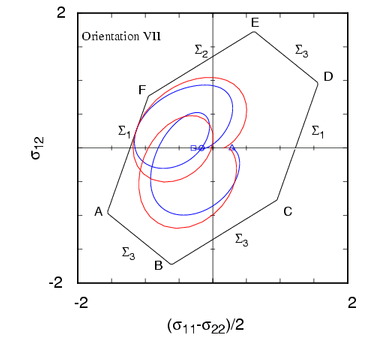 |
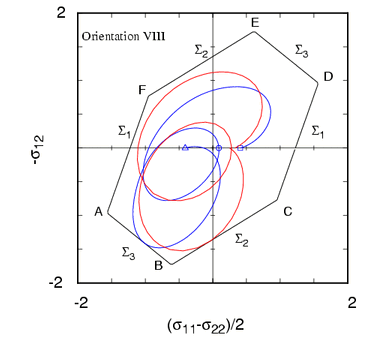 |
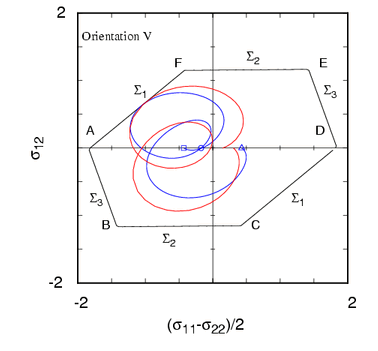 |
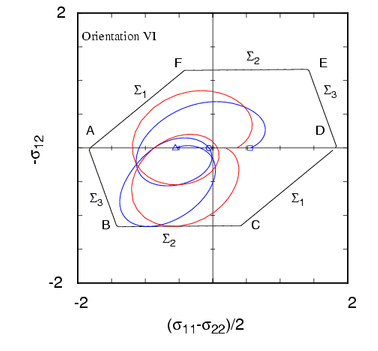 |
The animation above used the six images shown below. These images are orientented so that the crystral structure, indicated by the arrows at the right below, is always orientented the same way. Thus the slip lines in all the images are in the same directions. The patterns of slip lines changes due to the change in the orientation of the notch and the applied loading (which is always perpendicular to the notch).
 |
 |
|
||||||||
| Click for bigger images |
If we instead arrange the images so that the notch is always horizontal and the applied tension vertical, the images look like this:
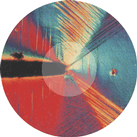 Orientation I |
 Orientation VII |
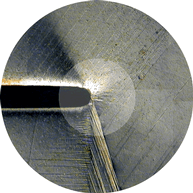 Orientation V |
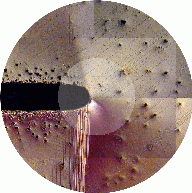 Orientation VI |
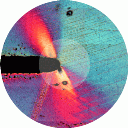 Orientation VIII |
 Orientation II |